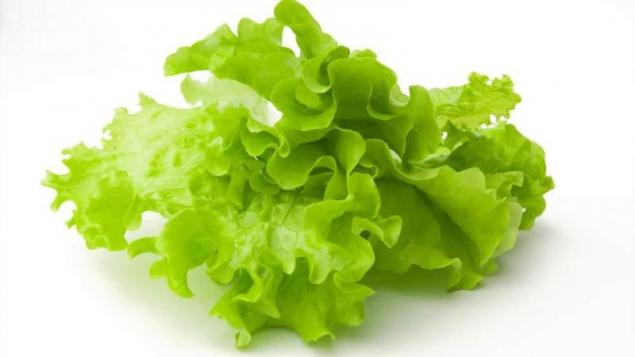545
Business idea: growing greens
Going over ideas for starting your own business, we often do not even think about those options that literally "lie" beneath our feet. Really who cares to pay attention to everyday and perceptible aspects of our lives, we do want something global and that the money at once and more. Forgetting that actually the profit margin is not always directly proportional to the value of the goods or the beauty and fashionableness.
The direction of "green" business

For example, the market for "green"
The real calculation of economic efficiency of cultivation of different crops shows that all things being equal, to grow vegetables two to three times more profitable than cereals, of course counting on one hectare. But growing several orders of magnitude more profitable than growing the same vegetables? While using small plots of land to really get a harvest all year round and most importantly that the demand for these products is also year-round. I agree that there are nuances with the cost grown greens in the summer and in the winter, but even with the decrease in prices, the profitability of growing up to several hundreds of percent, these margins there is not one other agricultural business.
The best option of business organization in the greenery, of course, is the greenhouse, although the implementation of this idea will be suitable indoor location, most of the cultures that we refer to the "green" feel great as when grown in the greenhouse, and grow well under the fluorescent lighting. Just use the greenhouse method is more capital-intensive and not always suitable for a starting businessman, but to highlight the utility room in 20 squares and place the racks with the necessary equipment will cost much cheaper. Plus in this case, the control of temperature, humidity and the amount of light is much easier and most importantly cheaper.
Great directions for green business:
The first option is grow dill and parsley. It should be noted that the majority of integrated crop and greens, in particular, always looks the best option of business. Why the best option was chosen these?

The benefits of growing dill and parsley:
The second option is a salad. Salad very specific culture and has a number of positive, first, it grows very well in hydroponics, and secondly, hydroponics does not spoil the taste (in fact, it is itself neutral), and thirdly, stable demand for a year. But there is a significant disadvantage, growing lettuce requires a more "advanced" of the cultivation process.

A third option for green business radishes. Radishes on domestic markets rather seasonal product, appearing EN masse in the spring, however, the demand is there all year round, lovers of radishes quite a lot. The main positive sides of this direction are:
The fourth option is to grow onions on the pen. This direction is somehow considered to be the best of ideas for a business, although practice shows that this view is incorrect.

Of course, to grow green onions is also beneficial, and can only be definitely not advised to use it as the main culture in Your business.
The fifth option is Basil, celery, spinach, sorrel. For those who are just starting their business and especially from scratch, definitely not recommended to use for growing these crops. On the one hand they require more care. On the other, the demand for these products is not high.
It is worth noting one little feature, the whole green business can be divided into two areas:
The first direction – implementation of the farm products on their own or in small bulk (half a kilo – kilo) in the region. In such cases the best would be growing several crops or even the entire list, in small venues.
The second direction is the implementation of locally grown goods in bulk. In this case, should not be sprayed, and optimally choose a specific culture for beginners I would advice to try the parsley and only deal with her. In this case, You will be able to achieve maximum results and to grow, and most importantly fail to provide a rhythmic supply bulk quantities of one culture to interact with the wholesalers.

Finally I want to say that green business is perhaps one of the most promising in our small towns, the main problem is the arrangement of greenhouses. In fact, many conversations about the impossibility of competition of the greenhouses in mid-latitudes, growing in warm areas, not more than words. Proper organization of the heating system with the use of new technologies allow such products to compete with the "southern" counterparts. published
P. S. And remember, just changing your mind — together we change the world! ©
Source: //pilotbiz.ru/zelenyj-biznes-tep/
The direction of "green" business

For example, the market for "green"
The real calculation of economic efficiency of cultivation of different crops shows that all things being equal, to grow vegetables two to three times more profitable than cereals, of course counting on one hectare. But growing several orders of magnitude more profitable than growing the same vegetables? While using small plots of land to really get a harvest all year round and most importantly that the demand for these products is also year-round. I agree that there are nuances with the cost grown greens in the summer and in the winter, but even with the decrease in prices, the profitability of growing up to several hundreds of percent, these margins there is not one other agricultural business.
The best option of business organization in the greenery, of course, is the greenhouse, although the implementation of this idea will be suitable indoor location, most of the cultures that we refer to the "green" feel great as when grown in the greenhouse, and grow well under the fluorescent lighting. Just use the greenhouse method is more capital-intensive and not always suitable for a starting businessman, but to highlight the utility room in 20 squares and place the racks with the necessary equipment will cost much cheaper. Plus in this case, the control of temperature, humidity and the amount of light is much easier and most importantly cheaper.
Great directions for green business:
The first option is grow dill and parsley. It should be noted that the majority of integrated crop and greens, in particular, always looks the best option of business. Why the best option was chosen these?

The benefits of growing dill and parsley:
- the plants are undemanding and require minimal conditions;
- consumption and the first and second, in our kitchen is traditional, which is important, because in this case I have a stable demand.
- both plants are growing.
The second option is a salad. Salad very specific culture and has a number of positive, first, it grows very well in hydroponics, and secondly, hydroponics does not spoil the taste (in fact, it is itself neutral), and thirdly, stable demand for a year. But there is a significant disadvantage, growing lettuce requires a more "advanced" of the cultivation process.

A third option for green business radishes. Radishes on domestic markets rather seasonal product, appearing EN masse in the spring, however, the demand is there all year round, lovers of radishes quite a lot. The main positive sides of this direction are:
- the simplicity of the radish;
- high productivity;
- a quick growing season, new varieties allow you to harvest 30 days after planting;
- low competition;
The fourth option is to grow onions on the pen. This direction is somehow considered to be the best of ideas for a business, although practice shows that this view is incorrect.
- first, the cultivation of onions requires a large area of at least the same as in the cultivation of radish. Plus you need to provide good coverage and avoid excessive amount of sun, otherwise just yellow onions. In all respects, the cultivation of fennel, radish, parsley and even lettuce is much easier for a business than to grow onions on the pen.
- second, the most whimsical bow in the implementation. On the one hand, he is very sick, on the other, after reaching marketable condition to remove it fast, otherwise, "burn," or let the "boom".

Of course, to grow green onions is also beneficial, and can only be definitely not advised to use it as the main culture in Your business.
The fifth option is Basil, celery, spinach, sorrel. For those who are just starting their business and especially from scratch, definitely not recommended to use for growing these crops. On the one hand they require more care. On the other, the demand for these products is not high.
It is worth noting one little feature, the whole green business can be divided into two areas:
The first direction – implementation of the farm products on their own or in small bulk (half a kilo – kilo) in the region. In such cases the best would be growing several crops or even the entire list, in small venues.
The second direction is the implementation of locally grown goods in bulk. In this case, should not be sprayed, and optimally choose a specific culture for beginners I would advice to try the parsley and only deal with her. In this case, You will be able to achieve maximum results and to grow, and most importantly fail to provide a rhythmic supply bulk quantities of one culture to interact with the wholesalers.

Finally I want to say that green business is perhaps one of the most promising in our small towns, the main problem is the arrangement of greenhouses. In fact, many conversations about the impossibility of competition of the greenhouses in mid-latitudes, growing in warm areas, not more than words. Proper organization of the heating system with the use of new technologies allow such products to compete with the "southern" counterparts. published
P. S. And remember, just changing your mind — together we change the world! ©
Source: //pilotbiz.ru/zelenyj-biznes-tep/
Recipe delicate mushroom pate
Doctor psychoendocrinology Mikhail Bogomolov: How to minimize risks if you want to lose weight























